The Article
Stereo 130 Amplifier From Leak
30th April 2021
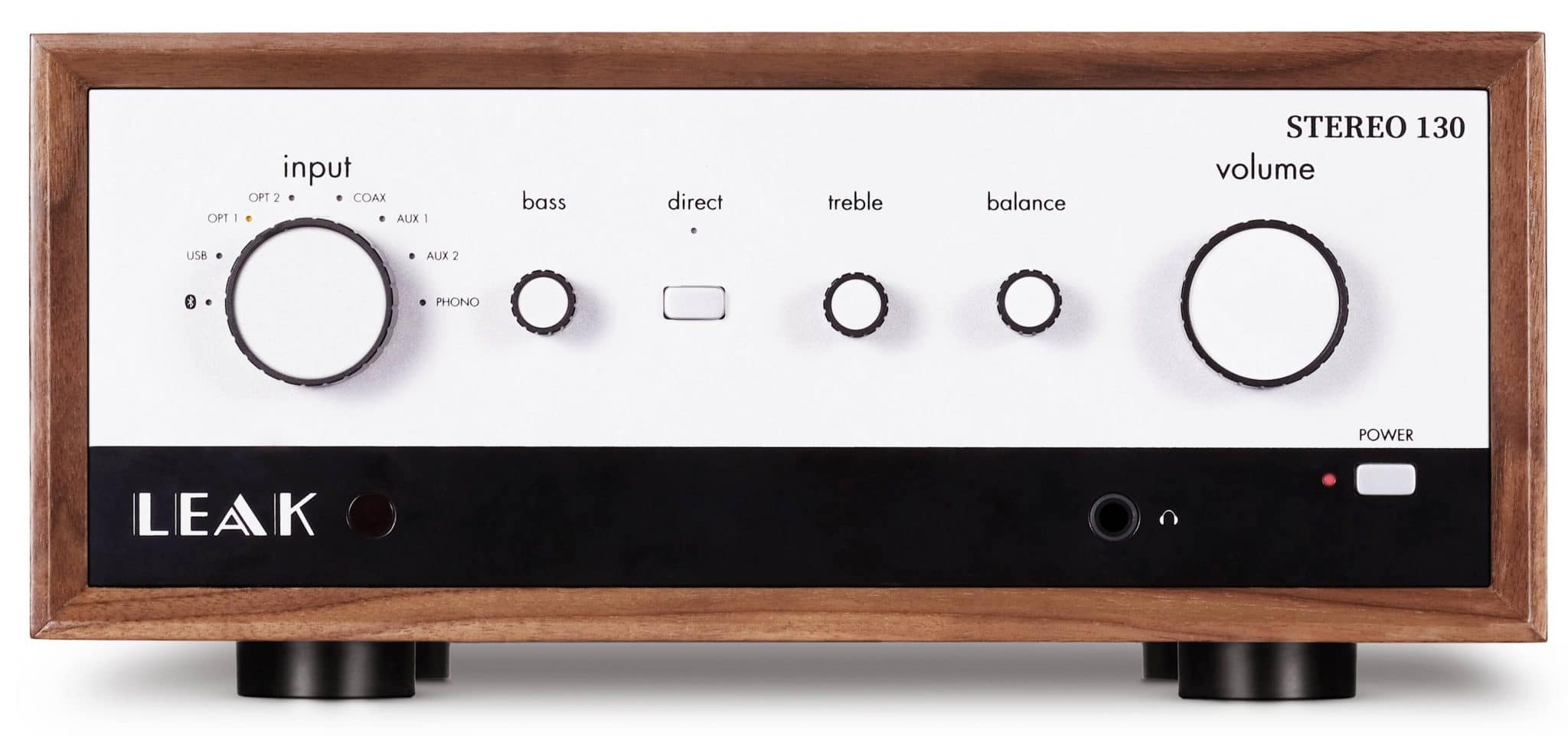
Adopting a compact, boxy design, this retro integrated amplifier design takes more than its name from past glories
Leak is a venerable name in hi-fi. Founded by Harold Joseph Leak, his company was up and running from 1934.
The company produced hi-fi components in the 40s, 50s and 60s and was responsible for a range of technological innovations during that time. It’s valve-based amplifiers were highly regarded and remain legendary and are still sonically desirable for those collectors with an eye for vintage gear.
Even Jimi Hendrix had one. You can see him here with an original Stereo 30 model (below).
Unless this one is strictly posed and nothing else, I reckon ol’Jimi is tweaking the Balance knob in this shot. At a guess, I think he’s added a bit of right channel there. Maybe that’s where his guitar solo is (early stereo, vocals on the left, guitars on the right and all that). “‘Scuse me, while I twist the balance knob <cue guitar break>,” said Jimi. Possibly.
And just like Jimi (he says, desperately trying to bask in the reflected glow) I myself have been on the verge of buying a modded Troughline tuner for I-don’t-know-how-long. Basically because it was seen as the best tuner that had ever been made. And that title still remains, in many eyes.
Leak stopped being an independent concern in 1969 when it was sold to the UK’s Rank Organisation (which itself was sold in 1997 to Carlton Communications). After that, Leak leaked away to a state of relative obscurity. The man himself sadly died in 1989.
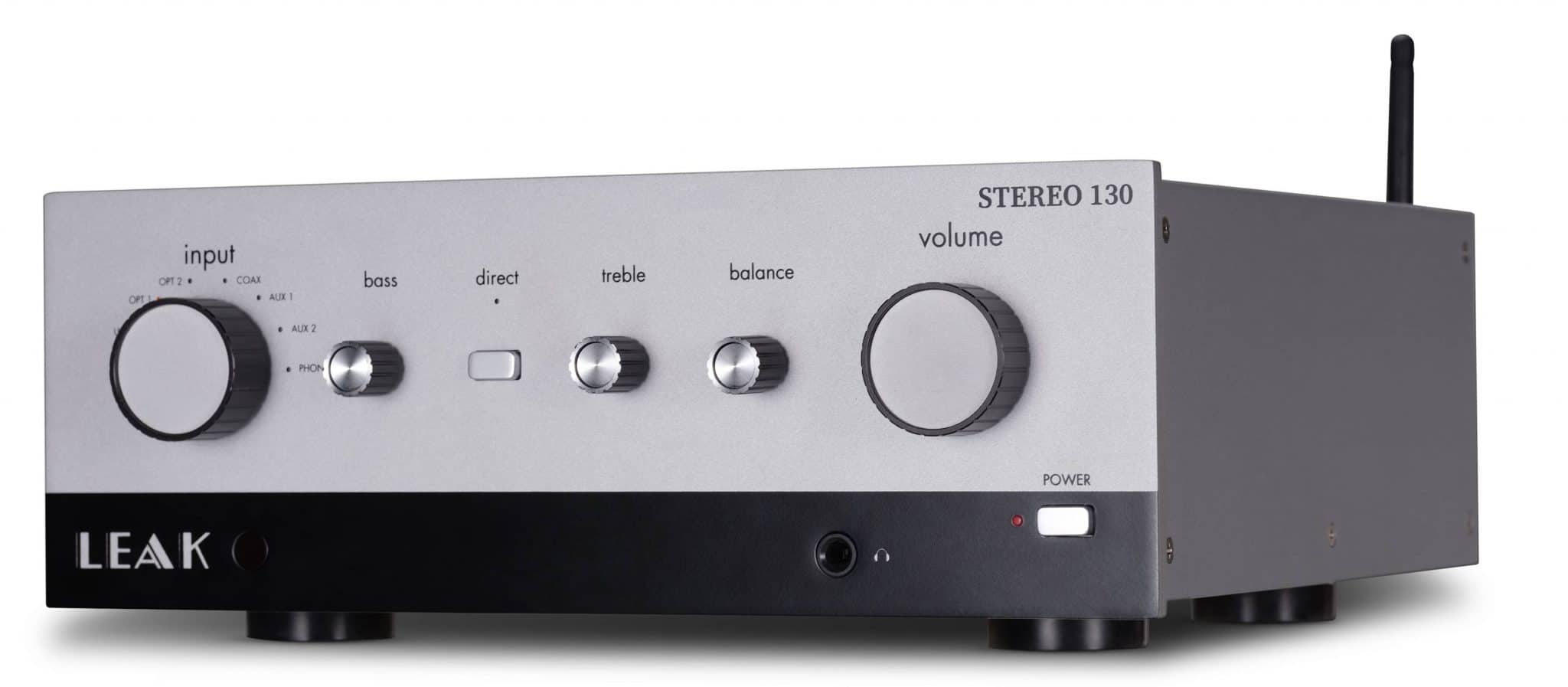
Leak hi-fi hasn’t been on the shelf for, apparently “over 40 years” (I honestly thought it was longer) but now it’s back but as a badge and an aesthetic only. Nothing more than that. Don’t expect the original team to have got back together in their dotage or the glow of valves peeping out of cooling slots or any of that. It’s not happening. Especially at this price point.
NO VALVES?
Does that disappoint me? The lack of valves et al? Of course it does. When I first heard that Leak was active as a hi-fi player again I immediately had the same romantic thoughts you probably had.
But again, the price point. It’s not going to happen at the current retail price position. Triple the price or, possibly better still, multiply the price by 10 and you might be talking Leak of old (especially if a new valve-based Leak amp could be voiced towards the classic sound).
Instead, despite the nostalgic pining, what you’ve got instead is a retro chassis filled with the guts of shiny new technologies and popping with contemporary sockets.
The style the Stereo 130 is inspired (not copied) from the classic transistor-based Stereo 30 and arrives either exposing its shame, bereft of woodgrain or with an optional walnut enclosure to give it 60s respectability. The latter was wrapped around my review sample.
Inside you’ll find a JFET-based MM phono amplifier line-level inputs and optical, coaxial and asynchronous USB digital connections.
THE FRONT
Starting at the front we are faced with a multitude of rotary controls. Starting at the left, you will find a rotary input selector (we’ll go through those in a moment) plus a set of rotary tone controls (i.e. bass, treble and balance). You can bypass these controls via a rectangular Direct button that sits within them. Engaging this button, the sonic change is relatively subtle but I would say that when not engaged, the sound is pretty dry and one-dimensional. It opens up when engaged.
A larger volume rotary knob sits on the right. Below this silver-backed area is a full-size socket for the built-in headphone amplifier and a rectangular ‘power’ (actually a standby) button with a red power light.
Incidentally, although the Input, Direct and Volume controls can be altered by the remote, the tone controls cannot. Also, the Volume knob is the only knob on the front fascia that is motorised. The Input knob lights do change when selected but the Input knob doesn’t move.
THE REAR
Flipping to the rear, on the left we have a Ground screw that sits above and accompanies the built-in phono amplifier. On the same bank are two sets of inputs and a pair of pre outs. I would have like to have seen more input options here but perhaps I’m just being greedy.
To the upper right of those is the speaker connection quadrant. Moving down again and to the right of those are a pair of trigger ports to allow you to control the system via a remote which is, bar a button change or two, almost exactly the same as the remote offered by the Audiolab 6000A integrated amplifier.
To the right of that are inputs and outputs for the built-in DAC. That means an optical and coax for your outs and a coax, two opticals and a USB Type B to run to a laptop, for example. A Type A connection I include but is devoted to software updates only.
PCM can handle up to 32bit/384kHz and DSD up to 11.2MHz/DSD256 files are supported, via its ES9018K2M Sabre32 Reference DAC chip. You’ll also find aptX Bluetooth, included.
To the right of that lot is a IEC power socket, allowing you to upgrade the supplied kettle lead plus a rocker power switch above.
Closer examination will also reveal a cooling grill inserted underneath the chassis which mirrors another cooling grill that is inserted into the top of the chassis.
The Class AB amplifier, pushing through 45W into 8 Ohms, features a toroidal transformer. Spanning 302 x 118 x 270 without the wooden cabinet outer or 326 x 146 x 276 with the outer frame in place and weighing in at 7kg (without frame) and 8.3kg (with) the finishes toggle between silver and walnut, depending if you have that frame in place.
SOUND QUALITY
I began with CD and jazz from Geoff Keezer on piano accompanied by sax and upright bass playing Madame Grenouille on the 1997 album, Turn Up the Quiet.
Listening to the Leak amplifier over a broad canvas, I was happy to report that the frequency discipline from the 130 was high. There were no nasties here. That is, the mids were never bright or barking. If anything they were on the smooth side, a little restricted in the upper mids perhaps to give the midrange a slight warming presentation. Nothing too extreme, I hasten to add, but there was a nostalgic glow that befitted its heritage, methinks.
Alongside that, the treble offered a similar personality, just rolling off the extended tip a little. Keezer, at one point, moved his hands from the piano keys, reached inside the piano itself and caressed the strings inside. It was at this point that you could hear all of the detail here. I never felt that the essential information was lacking. I could have asked for more, that’s true, but the available treble still provided a good supply of information.
The lower frequencies were similarly corralled in terms of discipline. There was no blooming here which I appreciated. The 130 provided a strong bass that was slightly warm and 70s like, with a golden glow to the lower end.
The overall effect from the soundstage leaned towards a nostalgic valve presentation. That’s what I hear here. The Stereo 130 is voiced to have that slight 60s and 70s-era tone. It strokes music until it purrs. There’s no aggression here. No attack. No aggressive edges. If I was being specific, at this early stage, I’d say that the Stereo 130 is aimed at people who are into Led Zeppelin and Fairport Convention, Joni Mitchell and Neil Young, T.Rex and The Faces.
I’ll test out my music theory and character with vintage, 70s-era Jethro Tull on vinyl in a moment, though.
After the Stereo 130 had been around for a while, I began to hear rumours that this amplifier was nothing but an Audiolab 6000A amplifier in new clothes. Maybe that copycat remote control fuelled those rumours.
Actually, the rumours are false. If there’s any relationship going on, its not with the Audiolab 6000A, it’s with the Quad Vena II
For now? Comparing the 130 to the Audiolab 6000A, the latter sounded more modern, brisk and neutral. The 6000A was strong in bass but only enough to provide a tonal balance but pulled back from the 130’s touch of bass emphasis. The Leak liked to cuddle you in a blanket of warming bass. The 6000A offered slightly better precision and accuracy in the upper mids alongside a slightly extended dynamic range.
Hence, the reverb tails on those piano string effects I mentioned earlier extended further via the 6000A and did so with greater focus.
I say all of this with a caveat. If you hear the 130 in isolation, you may not hear these distinctions or, at least, the distinctions might not be so great or as profound. I had to do a strict A-B series of tests to hear them. This is the conceit of the hi-fi journalist, of course. Nevertheless, the differences do exist.
70S’ GOODNESS
I then turned to the original pressing of Living in the Past from Jethro Tull via Chrysalis in 1972. And yep, sure enough, the Tull track slotted into the Leak’s personality very nicely indeed. The 70s mastering from this album was a perfect fit, allowing the music to flow very smoothly indeed with a perfectly balanced approach to this classic prog outing.
Vocals were full of emotive detail and texture, bass guitar provided a useful foundation to the music as a whole, drums were solid, weighty, providing a forward motion to the song but was never overly aggressive while the lead guitar was quite delicious in its complexity.
In fact, vinyl as a format worked very well with this amplifier. Playing selections from Kraftwerk and The Selector’s 70s neo-ska sounds, I found the playback immensely appealing.
Turning to the built-in phono amp and, much like the offering in the 6000A, I found it fine, not amazing but certainly workable and usable if you are short on cash after buying your new amplifier. I would still recommend an upgrade to a superior external model when possible, though.
Next up was the built-in DAC. I continued with Geof Keezer via my 6000CDT transport but this time plugged it directly to the Leak’s internal DAC and listened to that.
This interested me because moving from an external DAC to the internal DAC of the 6000A, even though the latter internal DAC was very good indeed, still resulted in are claustrophobia around the mids, slightly podgy bass and more noise in the upper mids providing angular notes. That is thematic sounded a tad more jaggy. Again, in broad terms, the 6000A’s internal DAC sounded very nice indeed but you could easily hear the difference compared to an external DAC model.
The same sonic effect could be heard via the Leak Stereo 130’s internal DAC but, because the 130 began from an ever-so slightly warming position, the move to a slightly lit midrange actually added a more modern balance to the overall presentation. Yes, the standard reduction in midrange air and space around the soundstage was a giveaway but the Leak’s internal DAC suited this jazz track very well indeed, considering.
The piano on this track was satisfyingly resonant. Piano had a rich, even fruity tonal response. The resonance was think and rich in its response while the sax had a complexity in its reedy nature. Upright bass, meanwhile was thick and weighty. You really felt you were getting your money’s worth in musical terms. Each instrument felt like they were putting effort in entertaining you.
I tried the built-in headphone amplifier via a pair of Sennheiser 660S phones and found the bass playback a little claustrophobic while the upper mids were rather rolled off. This was the least impressive aspect of the amplifier. It’s fine to get you going but I’d recommend an external model when you can.
Bluetooth was pretty impressive, though. I was surprised how good it sounded via the Stereo 130. Instrumental separation was very good indeed, helped by an infusion of air and space in the soundstage while subtle effects like the reverb from a plucked acoustic guitar could be heard. No mean feat for a lossy streaming file. Kylie Minogue’s All The Lovers, as you ask. I was also impressed at the broad sweep of the soundstage. Being a lost file, the missing musical information did reveal hard edges and bright spots but the Leak gave it a real go. So thumbs up here.
CONCLUSION
As a reviewer, it would be easy to swiftly put the boot in, slap it around the face and castigate it for not being strictly neutral and not pushing the dynamic reach but I’m not about to do that because the Stereo 130 never irritated me. I could quibble about clarity and information loss at the dynamic extremes but, overall? I enjoyed the musical experience from the Stereo 130. To some extent, the tonal presentation of any piece of hi-fi is not quite as important as your personal response to that component.
So, inherently, my sonic preference is one of balance and neutrality yet the Leak’s slightly warming approach never irritated me, never rubbed me up the wrong way. Is that because I fit the Leak demographic, perhaps?
Frankly, I could easily live with the Stereo 130. I wouldn’t use it as a reviewing tool, it’s too coloured. But, off duty, I could easily see myself whiling away the evenings and weekends with this box and with a smile on my face.
In fact, I had a great time with my Leak amplifier. Something I reckon I shared with my good friend, Jimi Hendrix. Or Jimbo as I used to playfully call him (oh, how he laughed).
The emphasis towards warmth is relatively subtle. There is warmth across the frequency band but that warmth is not an over-riding issue, it never really gets in the way and never becomes a problem.
It actually gives you a superb option if you’ve ever considered buying a 6000A, for example. If you’ve ever thought, “Yea, I like the 6000A but I would prefer a touch more bass weight, more of a valve-like glow around the mids and a 70s tone to the music.” Well, Leak offers you just that option now with the Stereo 130. And I like the fact that there even is an option.
Music is all about choice and hi-fi should be the same. I don’t want hi-fi components to sound like clones of each other. We are all different. We all have different ears and tonal preferences. The Leak Stereo 130 has bags of character and certainly offers you a definite sonic choice but it does so while retaining frequency discipline. It’s well behaved.
I thoroughly enjoyed my time with the Stereo 130. I think you will too.
LEAK STEREO 130 INTEGRATED AMPLIFIER
Price: £699 (Silver) or £799 (Wood Enclosure)
Website: www.leak.co.uk
GOOD: compact design, retro styling, accompanying sonic character, easy to use, feature set
BAD: inputs, upper mid roll off, bass emphasis
RATING: 8
[Don’t forget to check out my new Patreon Page at www.patreon.com/audiophileman, for exclusive videos, giveaways and more!]
REFERENCE
Tellurium Q cabling
Blue Horizon Professional Rack System
Harmonic Resolution Systems Noise Reduction Components


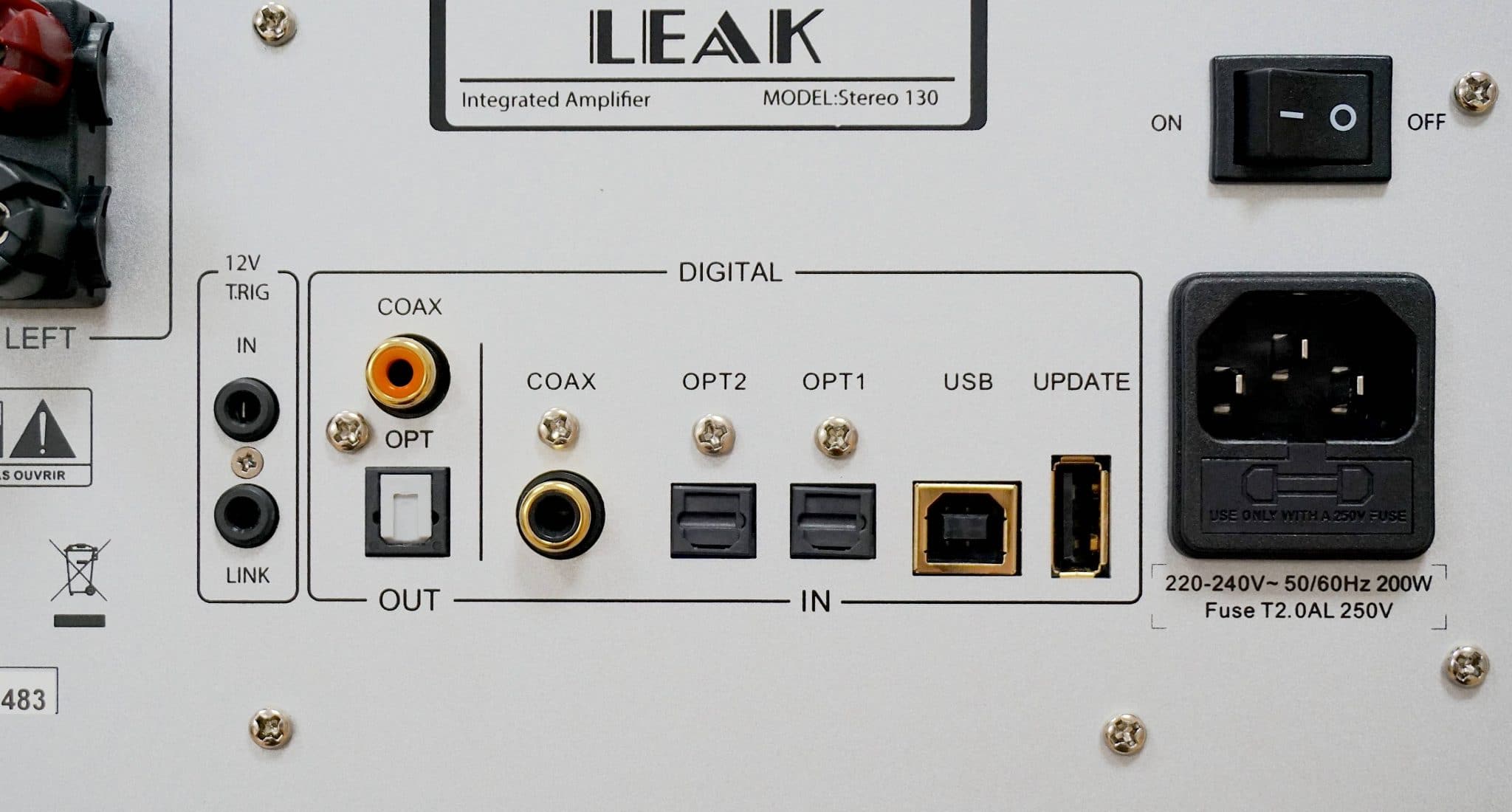
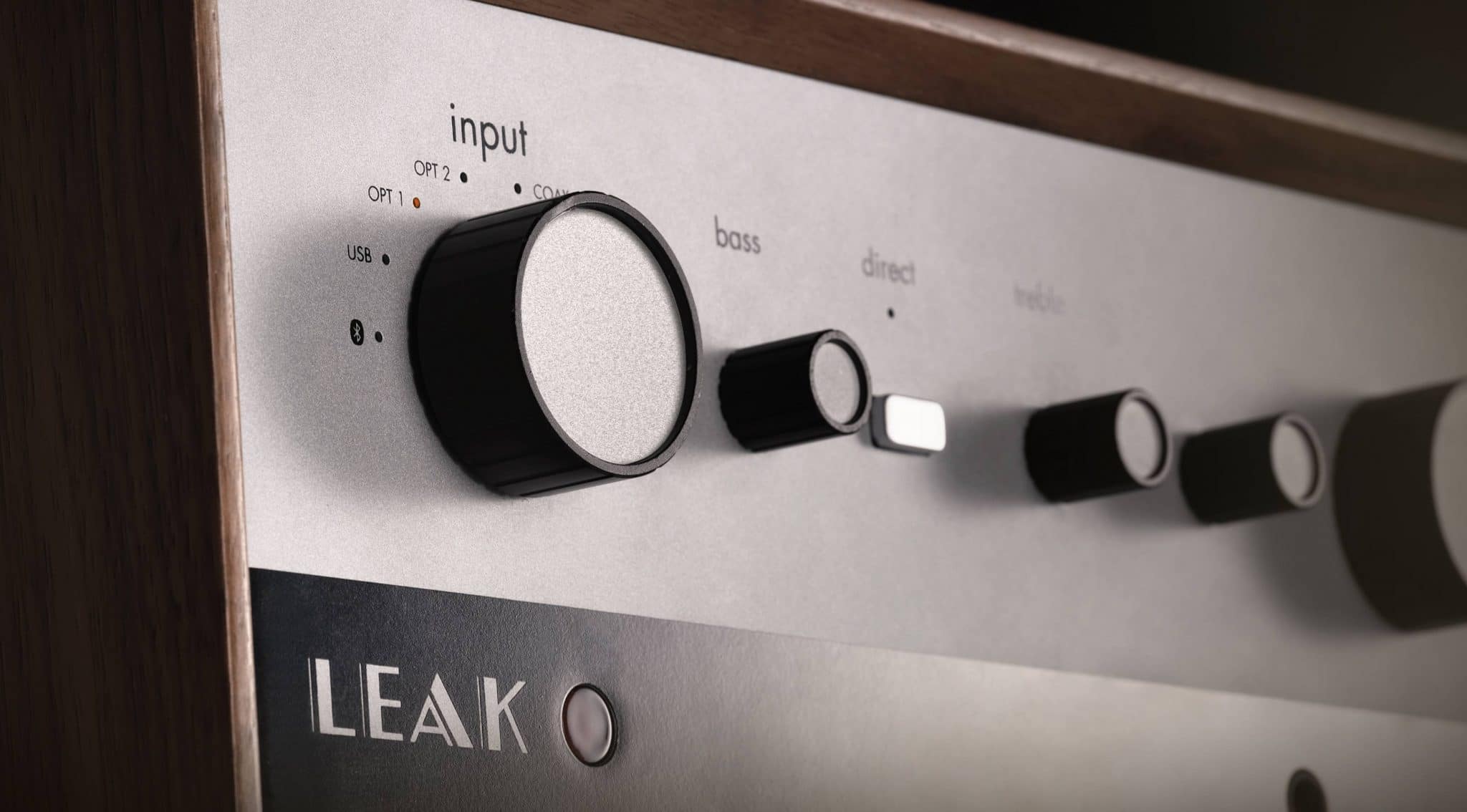
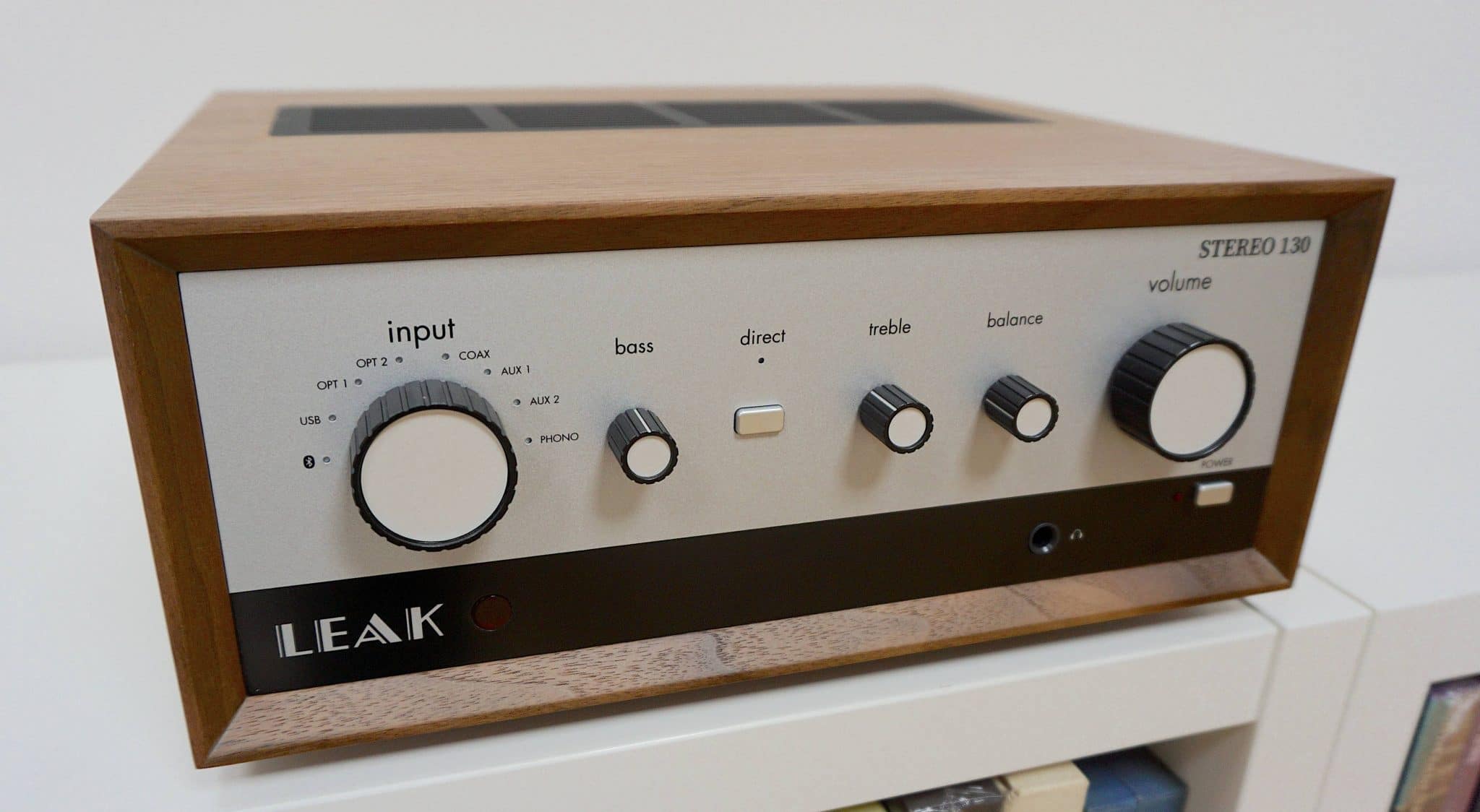
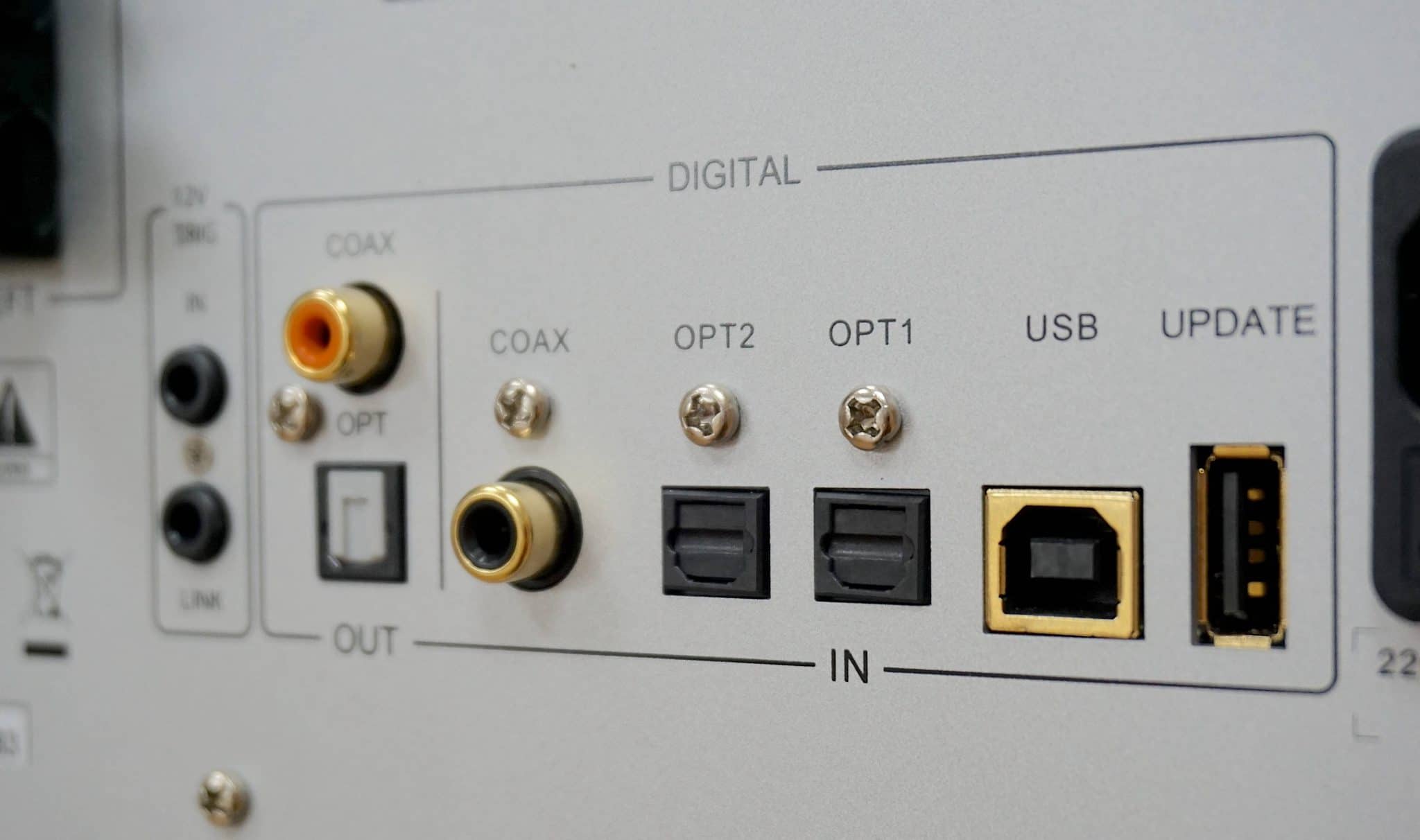
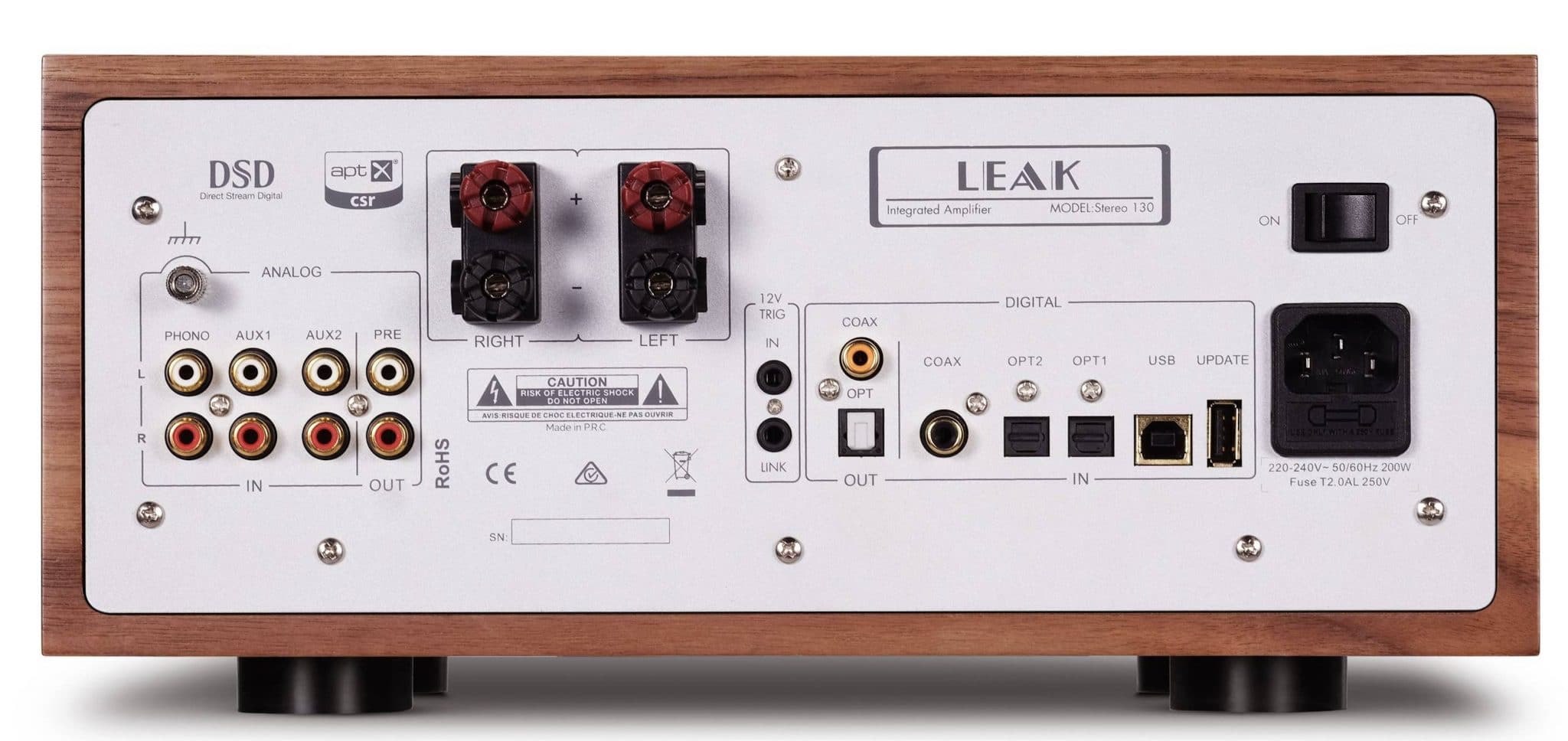
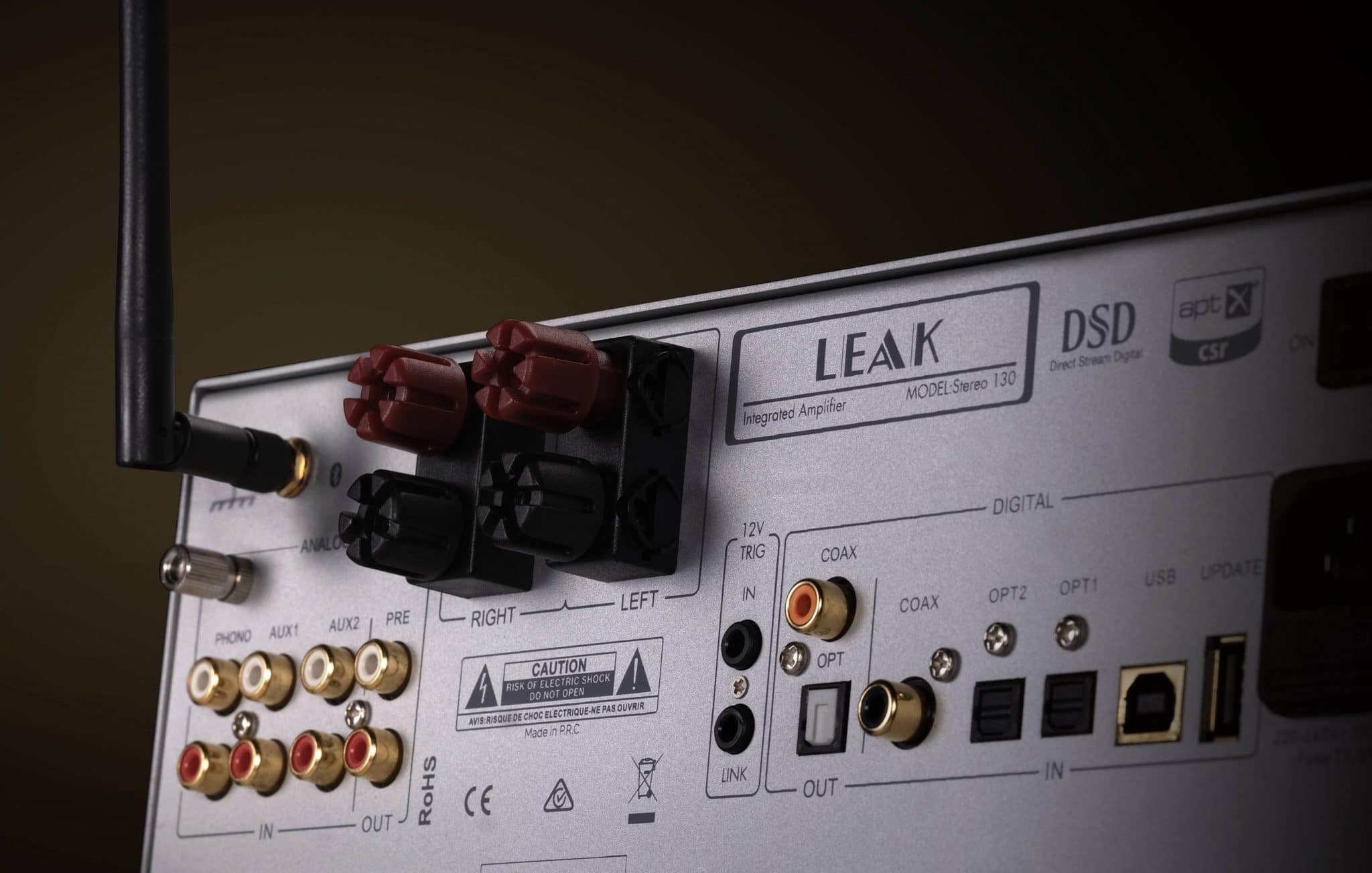
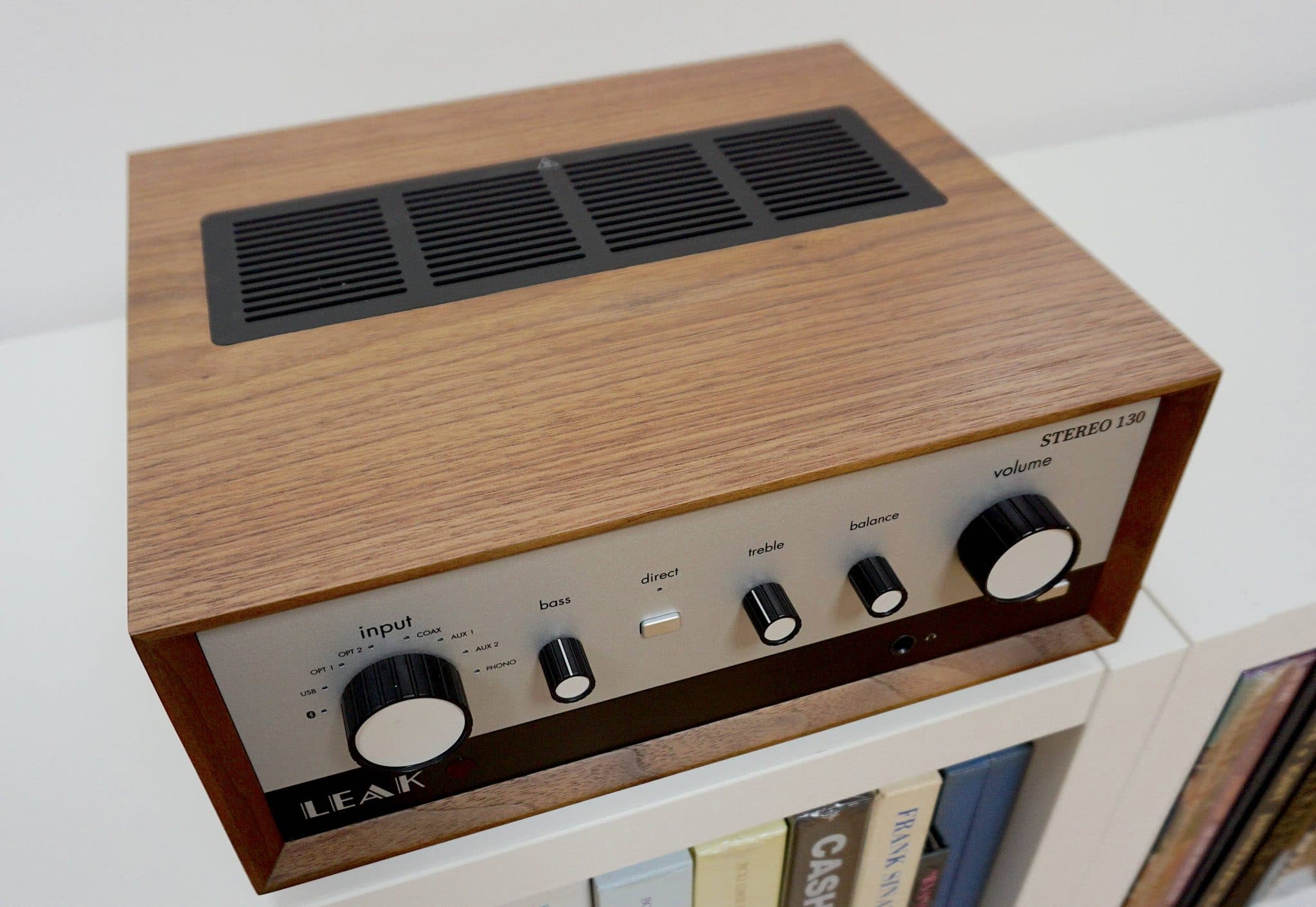
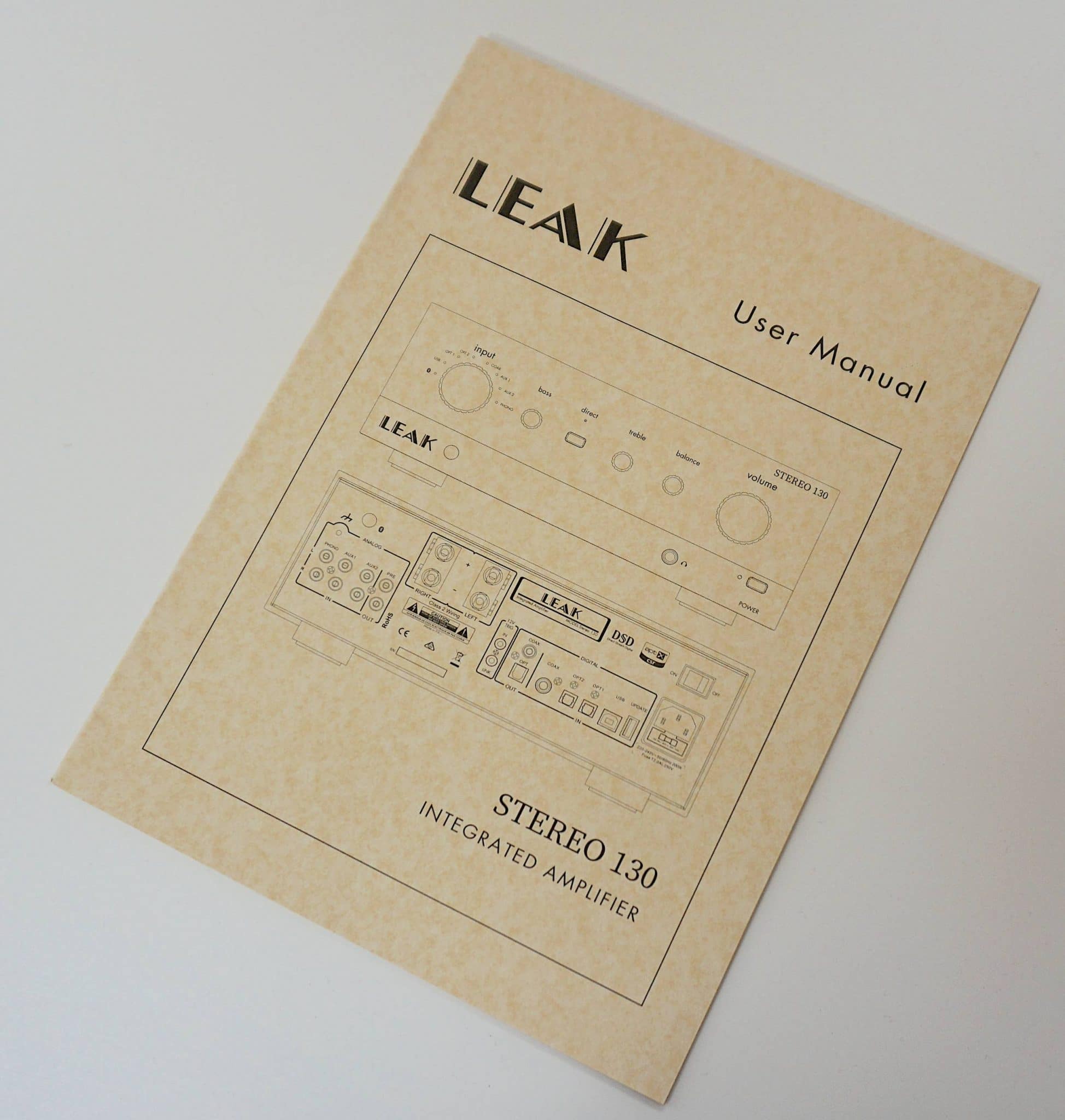
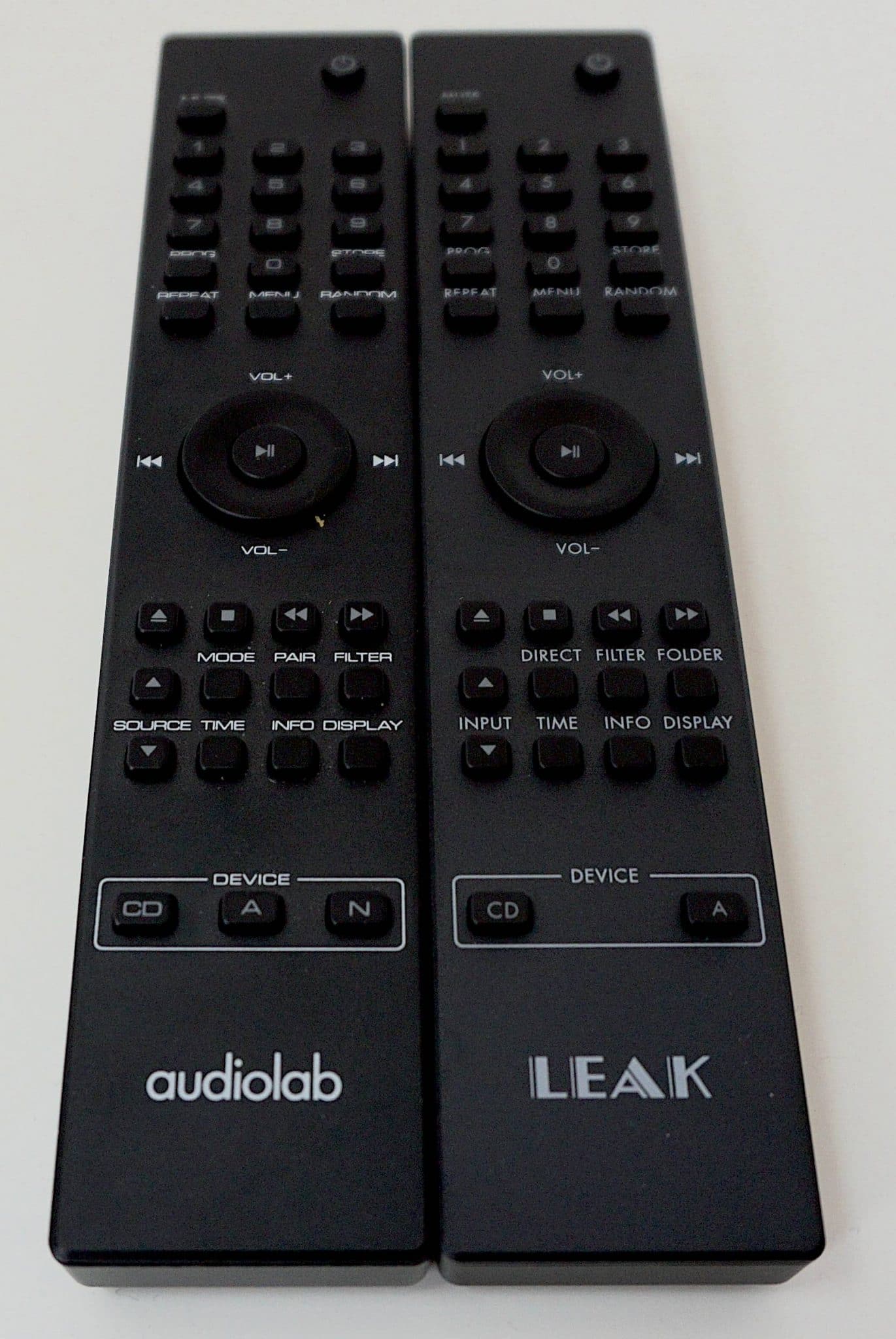
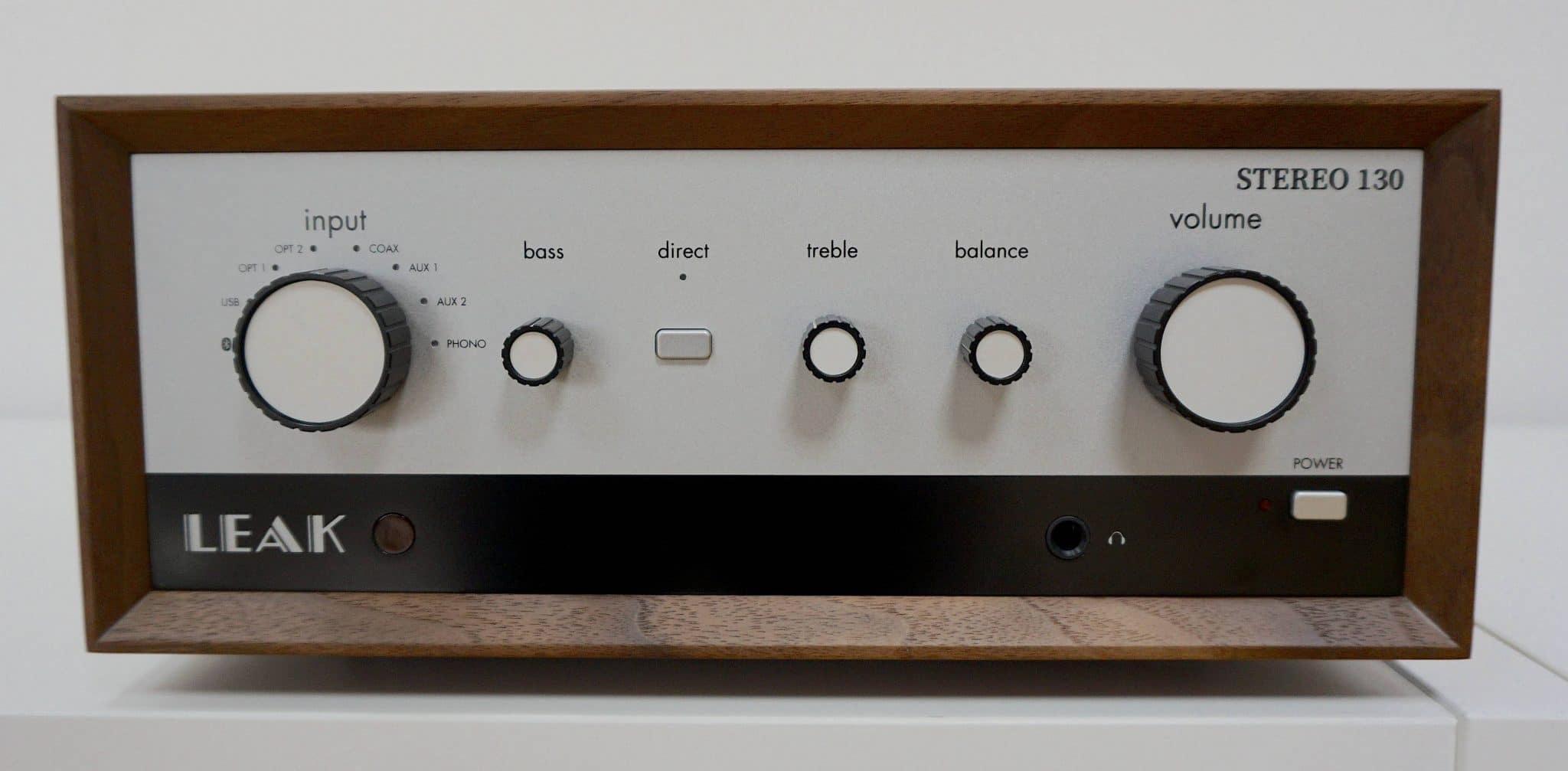
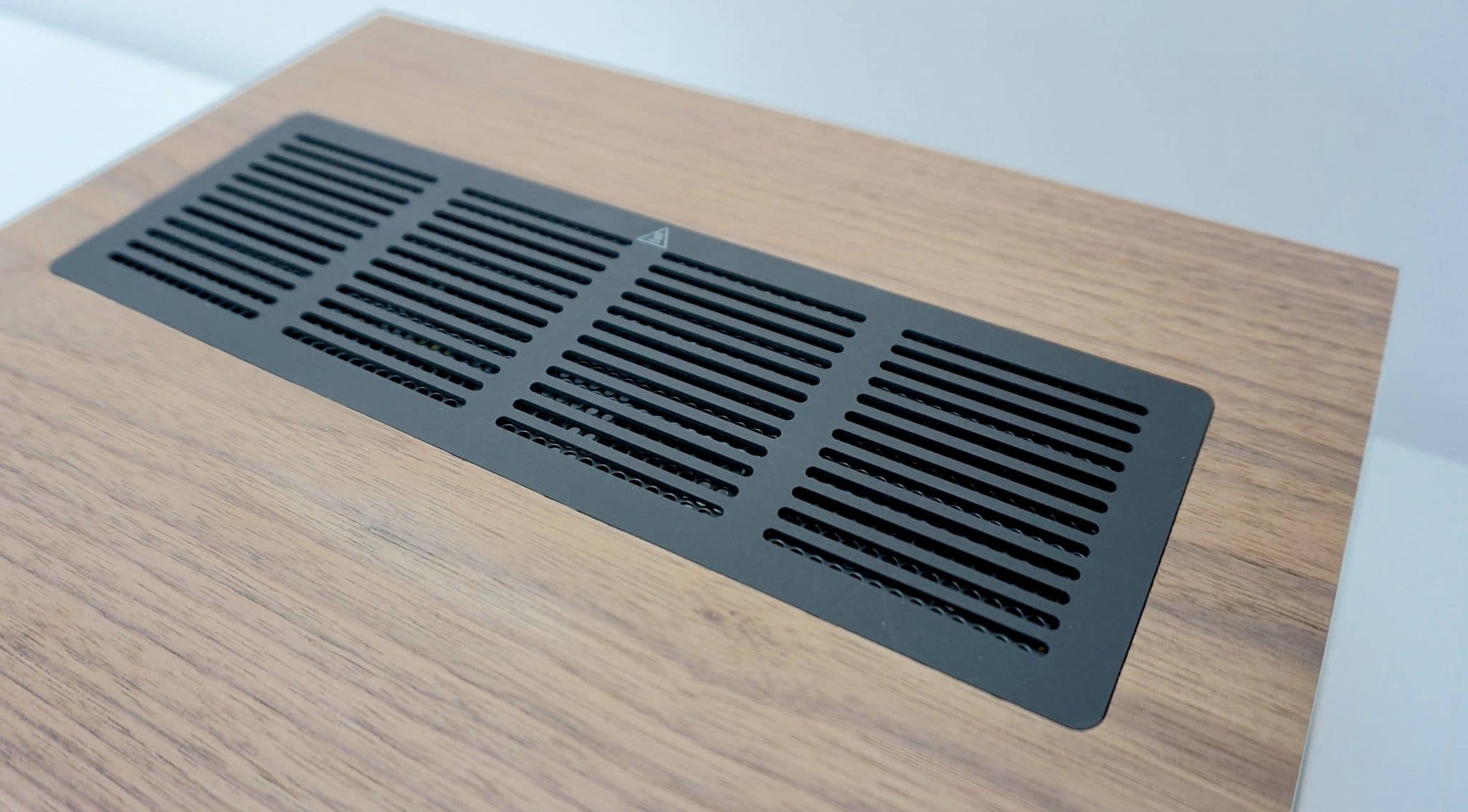
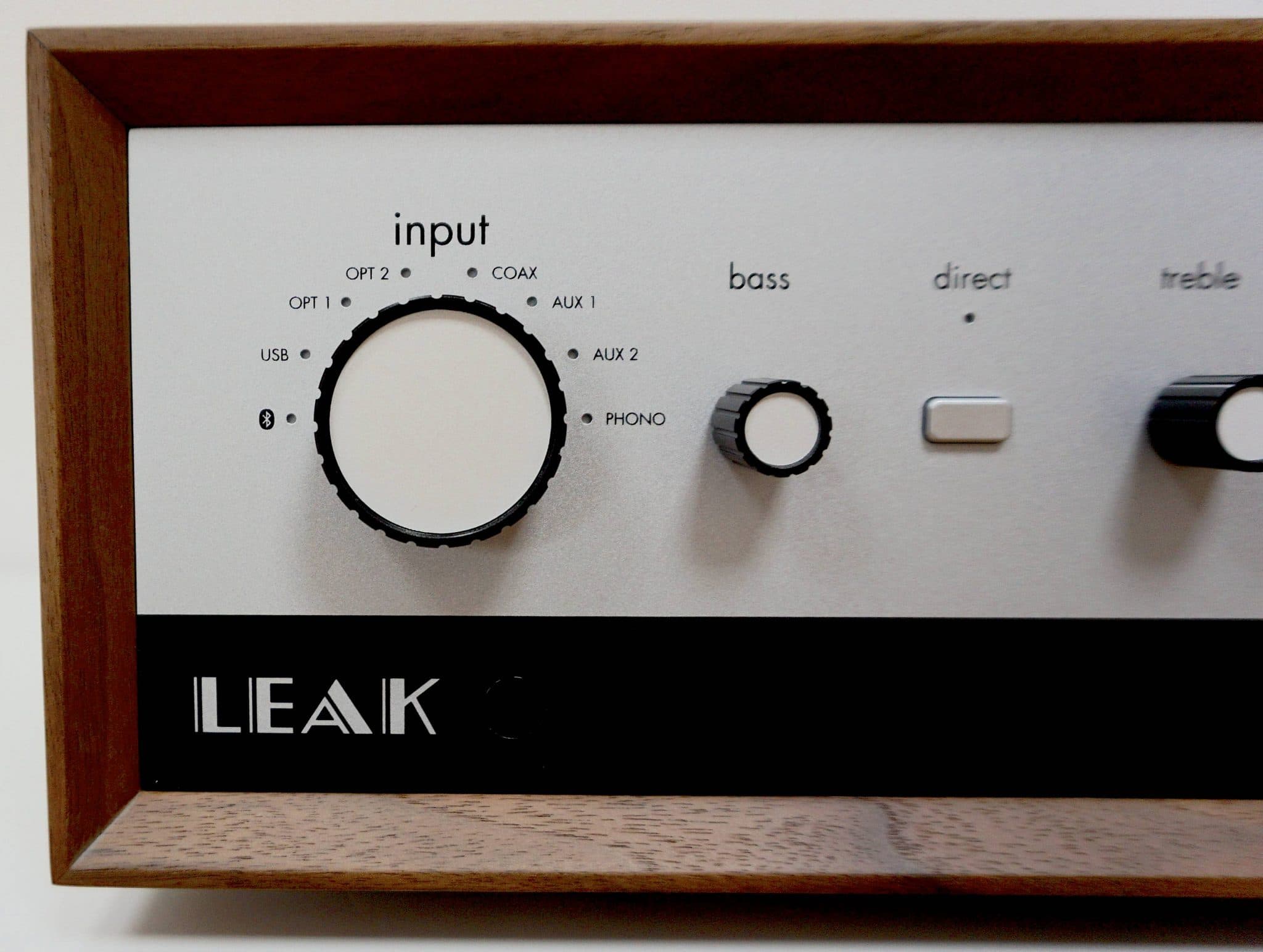
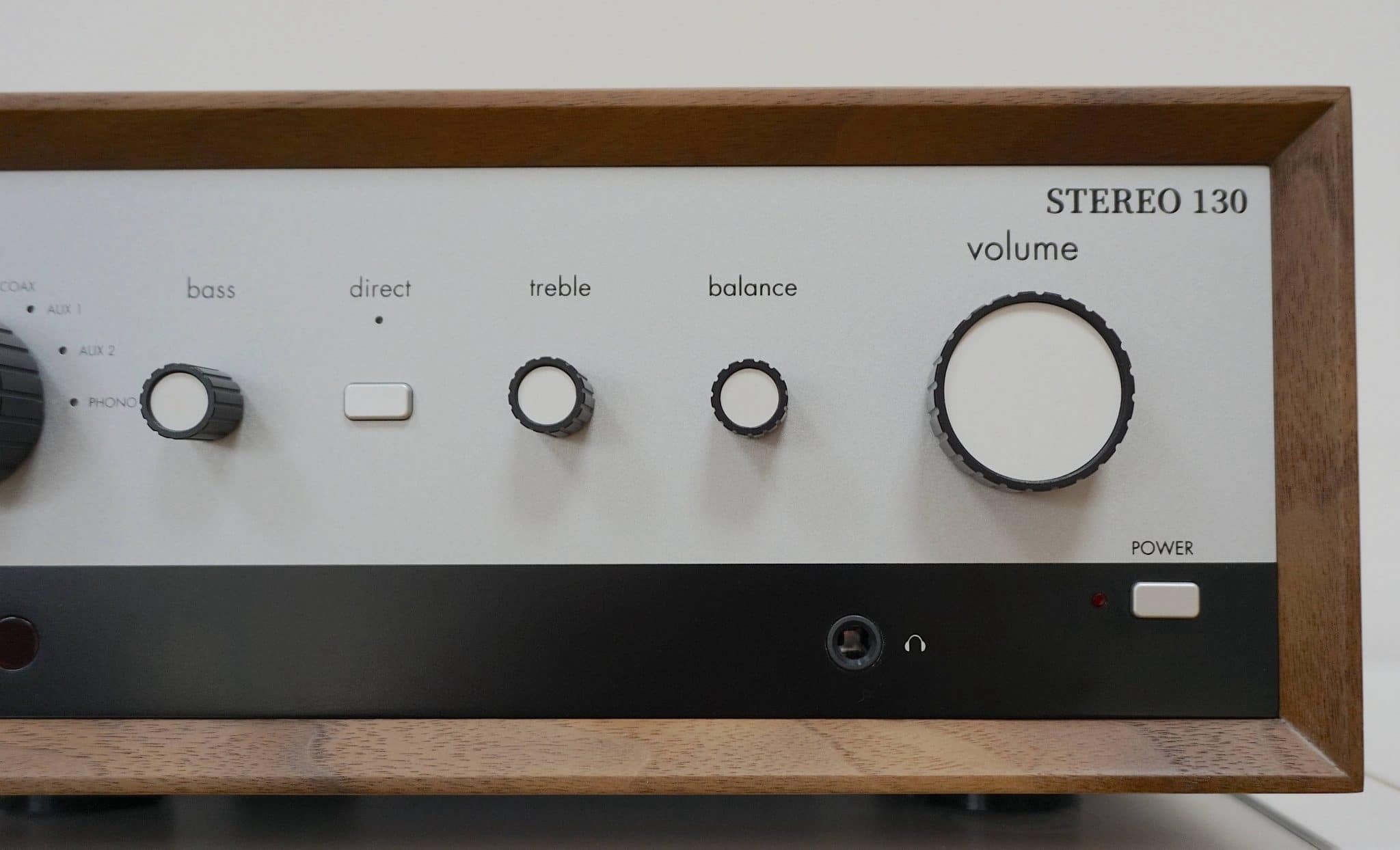
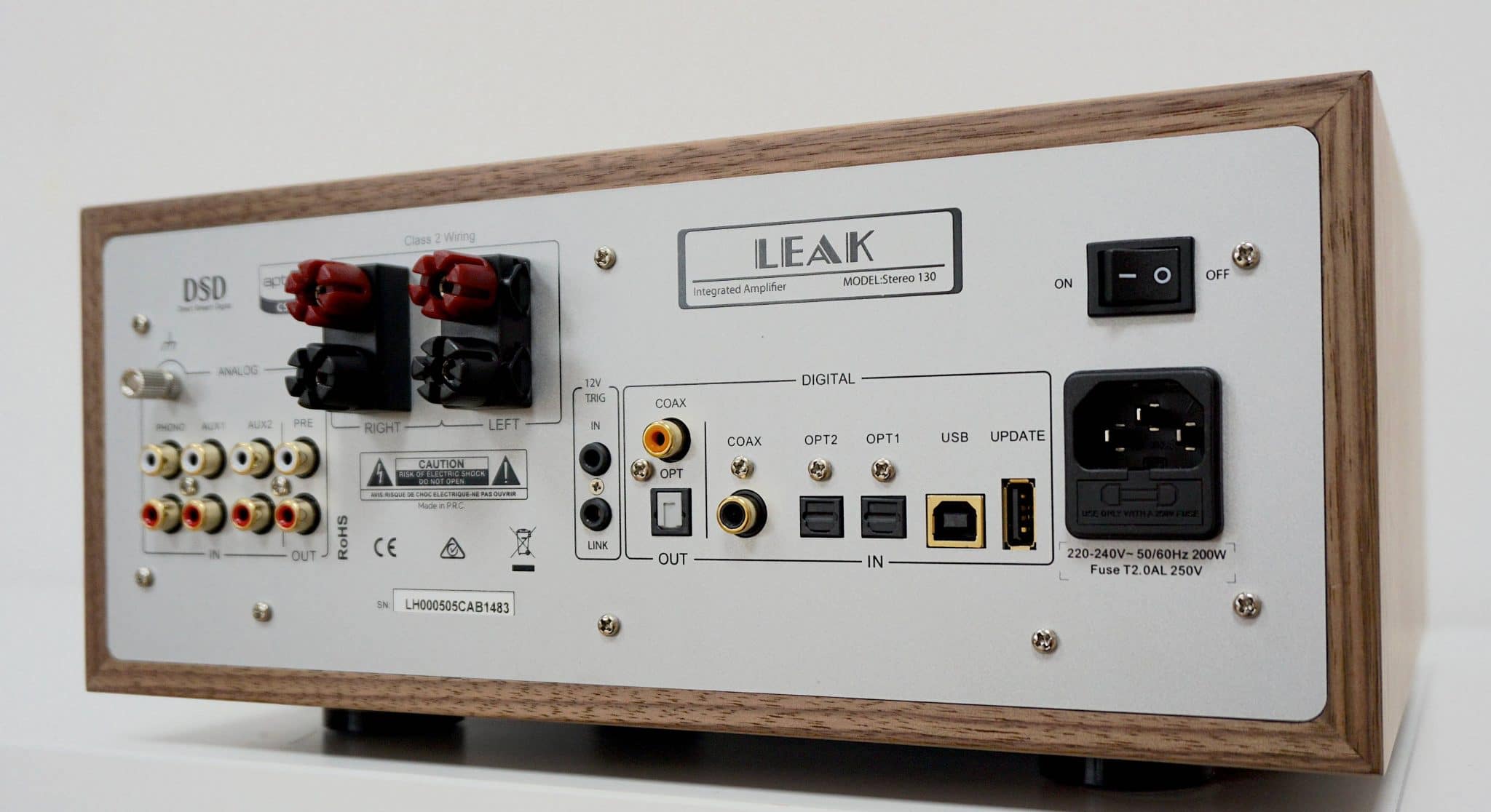
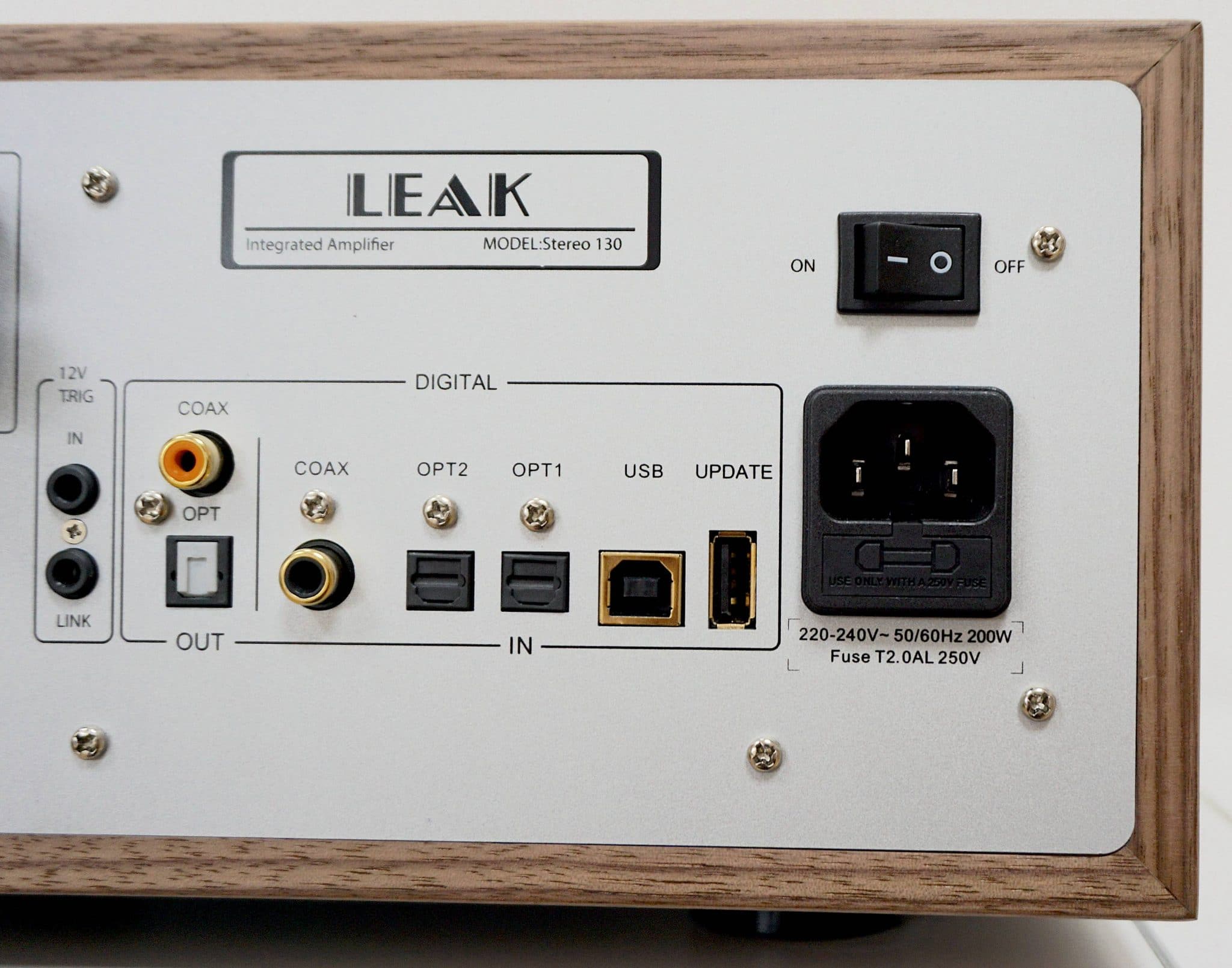
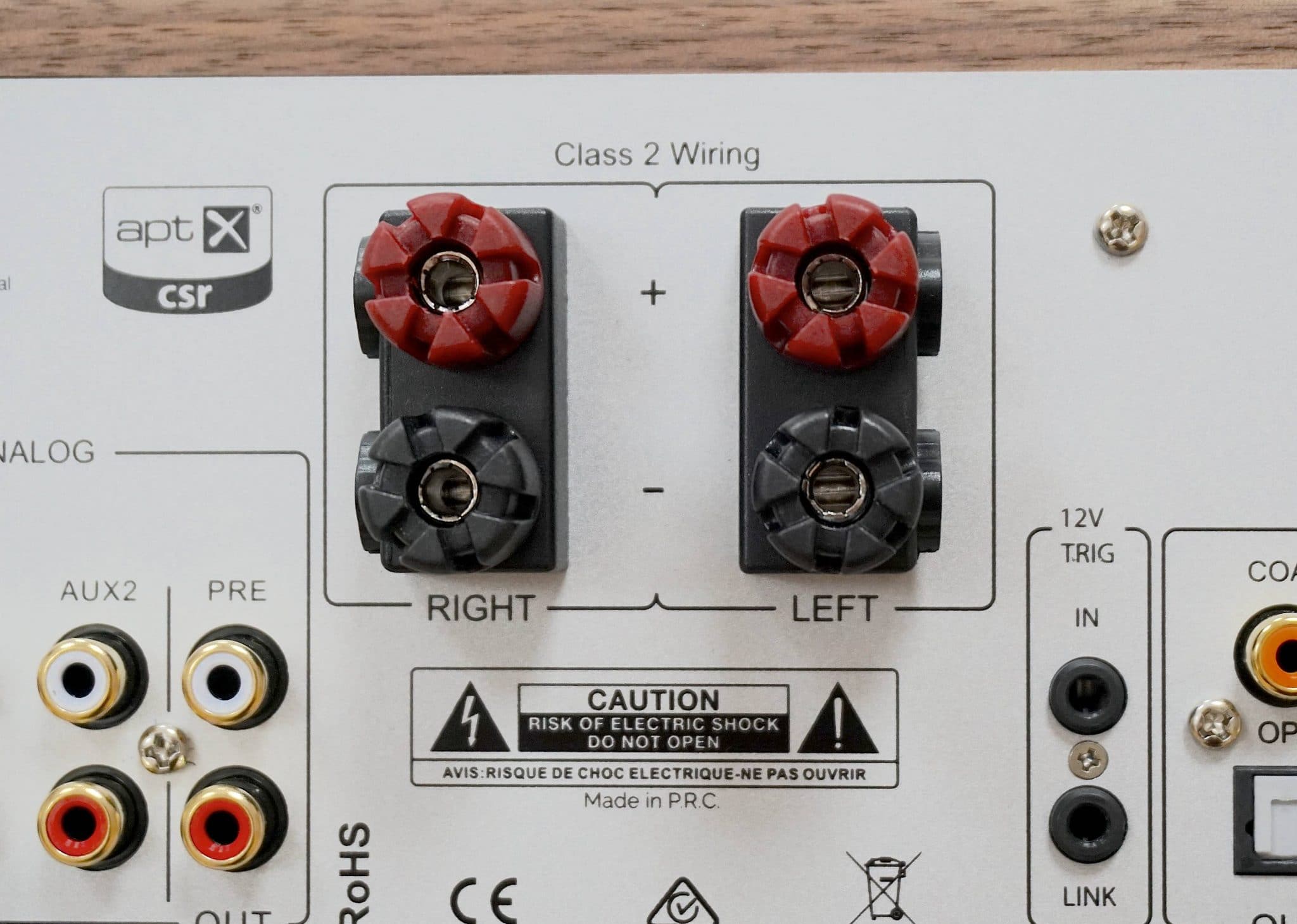
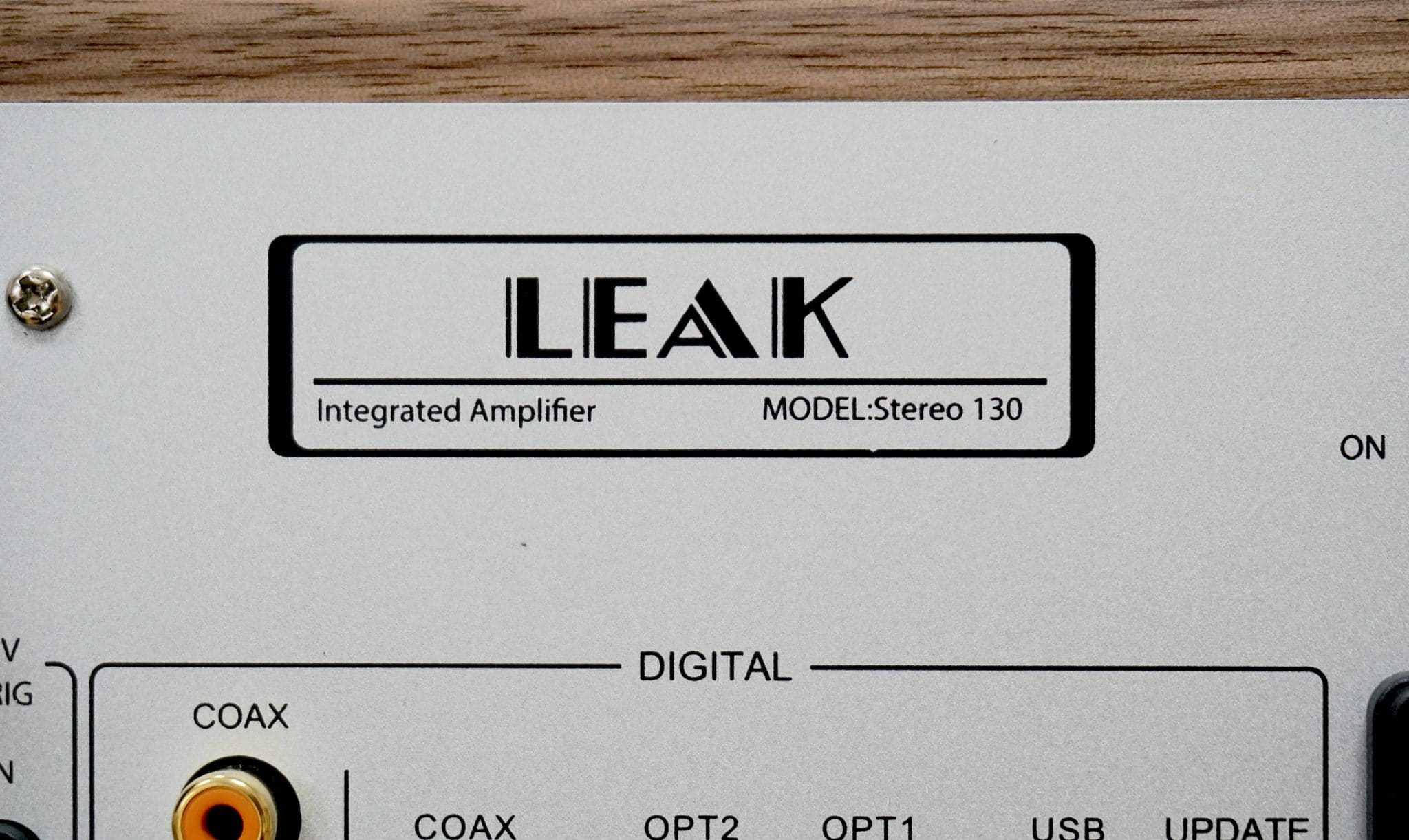
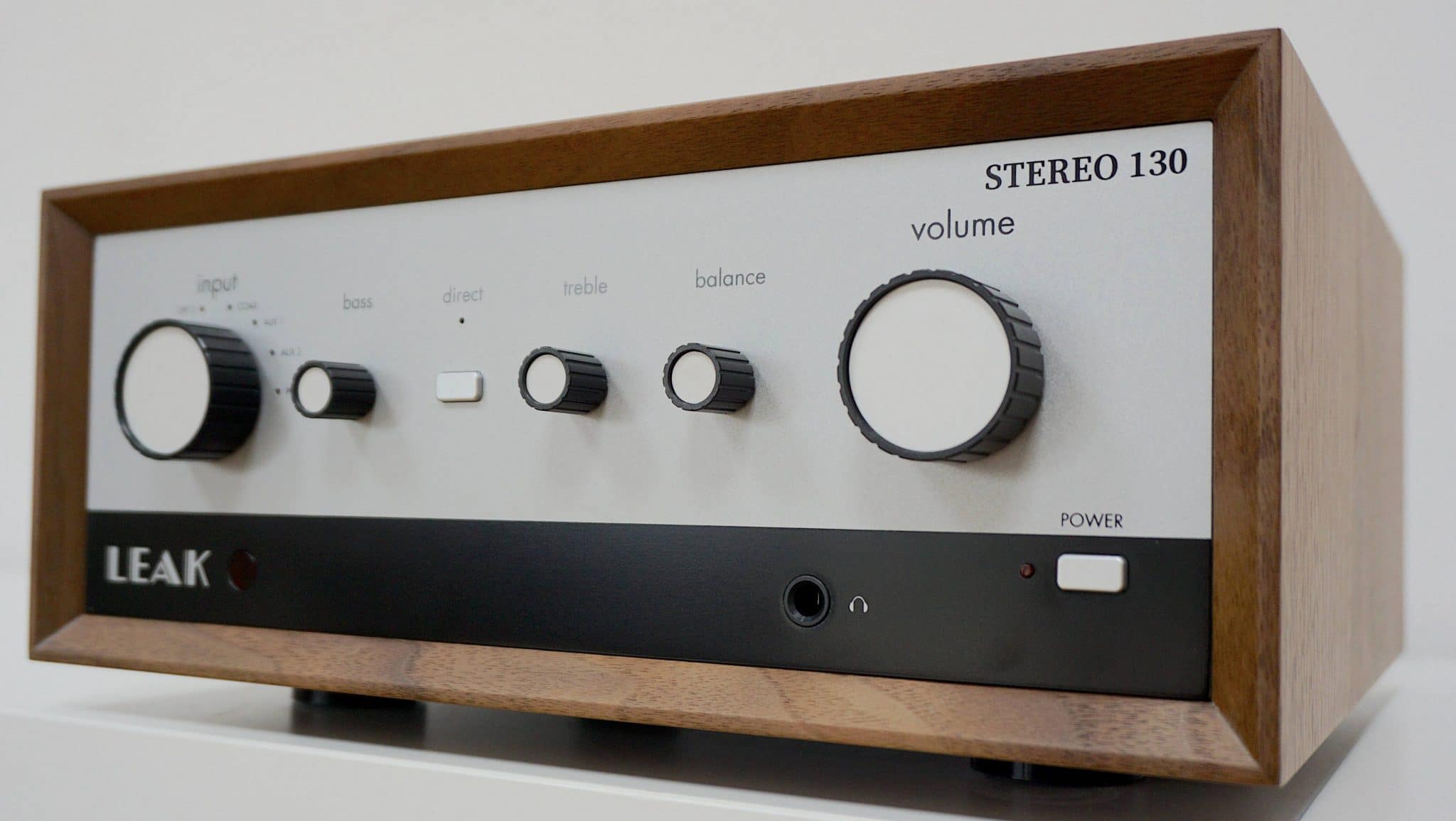



as an interconnect cable between pre-phono and integrated, do you have any suggestions?
Again – budget?
Circa 200 euro
Look at either QED or Atlas for cables around the upper limit of your budget.
I really really wanted to love the Leak. It has a great look and the small box really suited my interior design scheme. I bought the 130 + the CDT. The latter went unused as I tend to listen to vinyl and digital streams, so that went pretty quickly. As for the amp, I kept thinking I’d like it better once it had been broken in, or got the right settings, or found a matching recording. But, eventually, I was just disappointed by what I perceive as a flat presentation lacking in both sound stage precision and drive and attack. Have replaced with an Arcam A15 and suddenly I am enjoying music again. It might be due to my speakers, LS50 Metas, needing more juice than the Leak can provide, or maybe it’s just a boring listen.
Paul, How do you think the 130 would do powering a pair of Wharfedale Evo 4.4s in a large room (30 foot x 30 foot with vaulted ceiling) if brute volume isn’t a huge concern? If it’s a little underpowered, any suggestions besides replacing it? Have enjoyed all the reviews. Thanks!
Many thanks, Rob and yes, the 130 will drive the 4.4s fine. I don’t think it will be underpowered.
Hello audiophile man ! What about LEAK 130 with the Dentons 85 ? In a similar room as 40 feet x 13 feet? Will be the Leak underpowered? Thank you my friend !
The Leak should be able to run the speakers fine. I hope you have treated the room, though to compensate and removed any excess echoes?
Such a great and informative review, thanks!
I pulled the trigger on the 130 and CDT.
I’ve only had them for a few days …and I’m in a quandry.
I’m not sure my speakers are compatible (B&W 606 Mk2).
I say this as my previous set up (vintage Teac 500 series) worked REALLY well with the B&W.
REALLY well.
I’ve found the set-up to be way too bottom endy and muddy.
The Bluetooth however is excellent. Phono not so (am looking into a separate phono stage) and the CDT REALLY muddy.
Should I be looking at a speaker change ? Budget could be up to a grand / £5-600 2nd hand or thereabouts.
Many thanks in advance, Si
That might be the Leak you’re reporting on. The Leak has – as stated in the review – bass emphasis. If that’s the sonic bias you want, that’s why you would buy the Leak. I wouldn’t change the speakers to correct that. I’d look at the Leak.
Many thanks !!